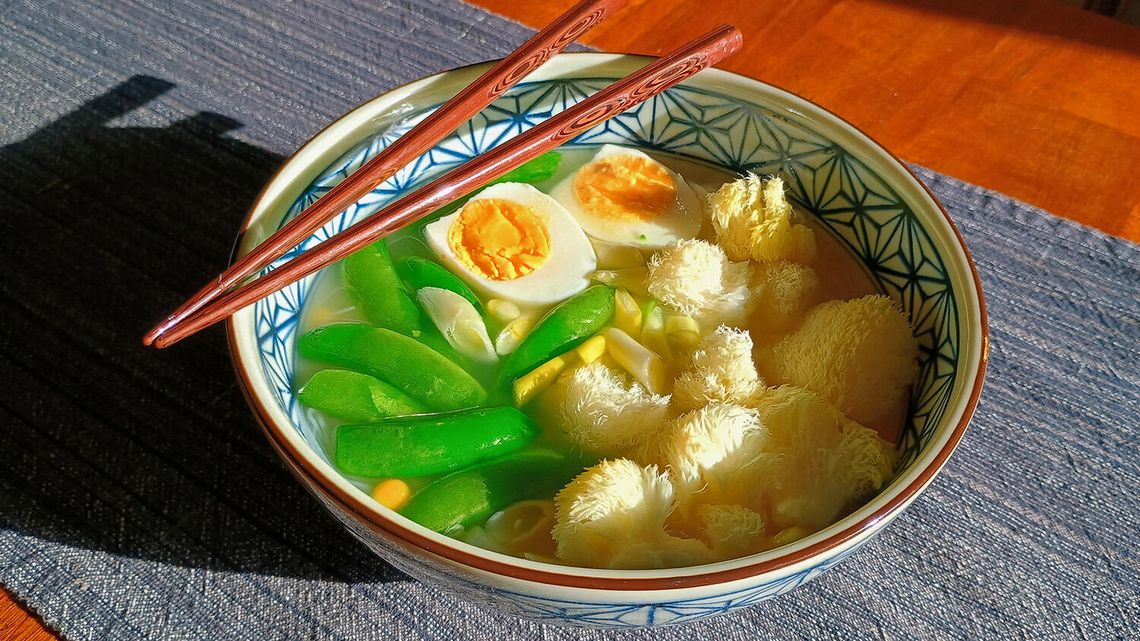One of the most common side effects of chemotherapy is nausea, but one of the annoying effects for me has been a change in the way food tastes. Suddenly, the avocados and other healthy foods I eat daily are completely unappetizing, and I'm eating like a picky toddler: toast and apple juice, please!
Luckily, one of the few spices that still tastes and smells good is ginger, so I'm excited to try the spice featured this month in the library's Spice Club. Ginger has long been a home remedy for nausea and other stomach ailments, and it seems to have scientific backing. According to Johns Hopkins Medicine, "ginger encourages efficient digestion," which is why it is helpful for digestive issues.
I keep fresh ginger in the freezer; the smell helps when I feel nauseated. I also love that ginger is one of the few flavors that genuinely works in both sweet and savory dishes. Gingerbread and spiced cookies are something I've always enjoyed. Lately, however, I've been experimenting with making ramen from scratch, and ginger is a major player in the flavor of noodle soup.
A visit to Marufuku Ramen was all it took for me to start trying ramen (and steamed buns) at home. I found "Ramen: 80 Easy Noodle Bowls and Broths" by Makiko Sano to be an excellent guide for me as a beginner trying to tackle an iconic dish that seems simple but really is quite involved. Now that I understand the time and effort that goes into a bowl of ramen, I enjoy it even more.
Ramen starts with tare, "dipping sauce," which goes into the empty bowl before any other ingredients. Tare is mostly soy sauce with rice vinegar, mirin, and brown sugar. The ingredients need to be cooked, and then the tare needs a week or so in the fridge to develop the flavor. The second layer is the broth, or dashi, which also requires some lead time to cook. I make pork dashi and freeze it in an ice cube tray for use later.
The ramen can come together easily once you have your tare and broth. If you are using regular dried noodles (or making them from scratch), you have a little more cooking time, but fresh or instant noodles mean you can put your noodles in with toppings and have everything ready at once.
Pork Dashi (adapted from Ramen)
Usually, broth is made using mostly bones, but I've had a hard time finding them on their own, so I typically use a large, bone-in pork chop. After making the broth, I can shred the meat and use it in the finished Ramen or in steamed buns. One of the main ingredients in the broth is water, so if you don't like the taste of your tap water, you will want to use filtered water.
Ingredients
1 large, bone-in pork chop
Water to cover
3 bunches scallions, roughly chopped
1 inch fresh ginger root, shaved
4 cloves garlic
1 white onion, roughly chopped
1/2 cup cooking sake (or white wine)
Directions
- Rinse the pork and put in a pot that is big enough to hold all the ingredients. Cover pork with water and bring to a boil. Reduce heat and simmer for 30-40 minutes, skimming off any scum that rises to the top. When the water remains relatively clear, add the other ingredients.
- Simmer for 7-8 hours, topping up the water when it gets low. Strain and store in the fridge for up to 5 days, or freeze in ice cube trays for easy portioning.
- When ready to use, heat broth to boiling. Add 1-2 tablespoons of tare and your instant or fresh noodles (I love instant rice noodles) to the bottom of your bowl. Pour heated broth over the tare. Add your favorite toppings and put a lid or plate over your bowl to steam your toppings. My favorite toppings are corn, spring onions, snap peas, mushrooms, and a boiled egg.
Joining the Spice Club is easy: Stop into the Churchill County Library anytime in April to pick up a sample of ginger to use at home and see what delicious spices are waiting for exploration each month.
J is the Children's Services Librarian at the Churchill County Library and is undergoing chemotherapy while modeling an increasingly wide variety of hats.










































Comment
Comments